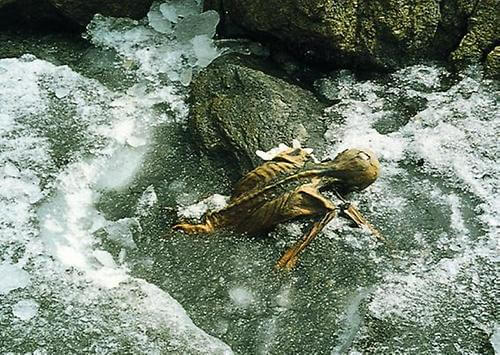Ötzi the Iceman: The famous frozen mummy–
Ötzi’s discovery ranks as one of the greatest archaeological finds of the 20th century.
The following written content by Tom Garlinghouse

Ötzi the Iceman is the well-preserved, 5,300-year-old mummy that caused an international sensation when it was dug out of a glacier high in the Italian Alps in 1991.
Since that time, the naturally mummified individual — whom the press named Ötzi because he was found in the mountains above the Ötztal Valley — has continued to attract intense public interest and professional scrutiny as the man’s mummified remains, the clothes he wore and the implements he carried have been studied over the past few decades.
Indeed, Ötzi’s discovery ranks as one of the greatest archaeological finds of the 20th century.
“He is so important because, for the first time, we have the possibility of knowing a Copper Age individual who died in the same situation as he had lived,” said Katharina Hersel, a spokesperson for the South Tyrol Museum of Archaeology in Bolzano, Italy, where Ötzi is housed.
But the story of his discovery, as with many archaeological finds, is a tale of knowledge gained in small increments. Ötzi has yielded his secrets slowly, through patient and detailed analysis over time.
Ötzi the Iceman was found by two German hikers who were making their way across the Tisenjoch Pass at an elevation of 10,530 feet (3,210 meters) above the Ötztal Valley in western Austria in September 1991. The hikers were skirting a glacier on the border of Austria and Italy when they noticed the upper part of a human body protruding from the ice.
“The mummy was found lying outstretched on his stomach,” Hersel said. “The left arm was strongly angled to the right and lay under the chin.”

That summer had been particularly warm, Hersel said, and the high temperatures aided in exposing Ötzi’s remains. “There had been a warm Sahara wind that brought sand to the glacier in which Ötzi was stuck,” she said. “So it was not pure white but covered with red sand and melted even quicker.” Read more from Live Science.





